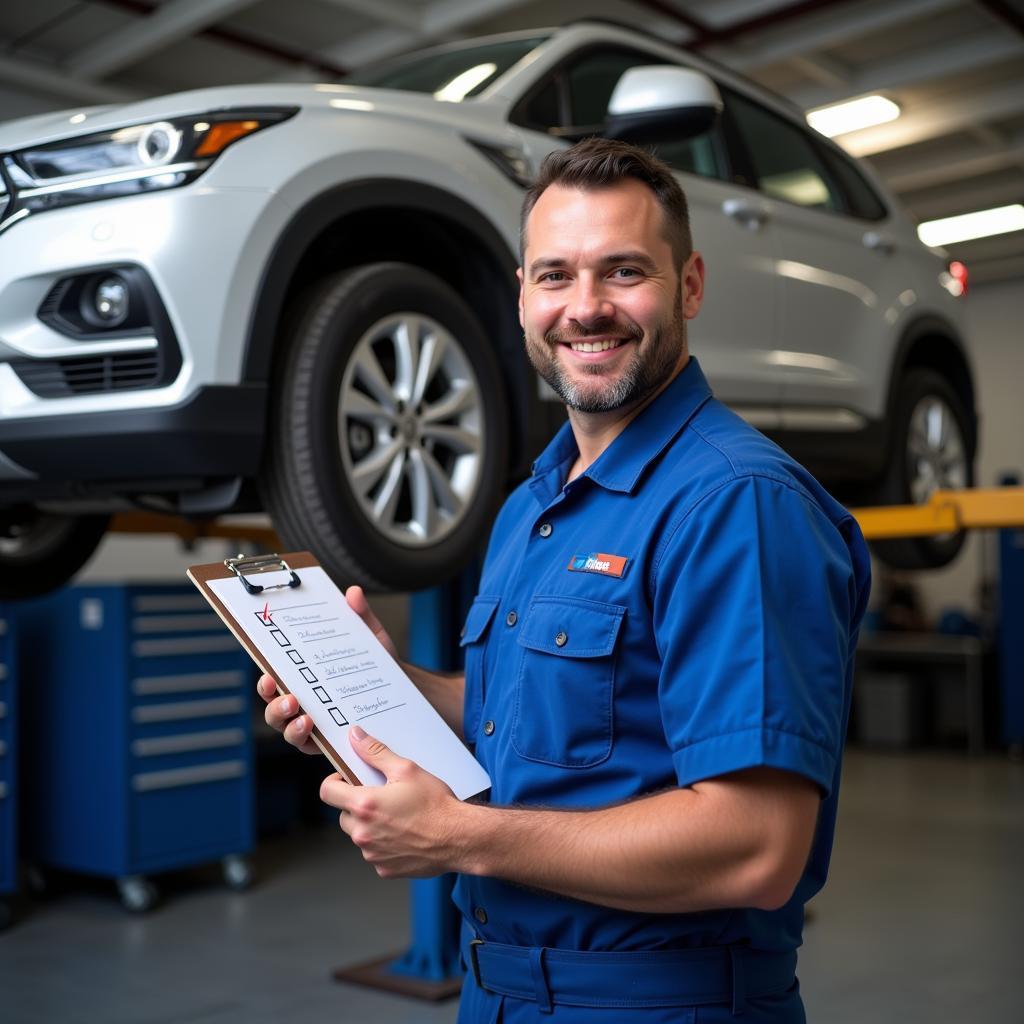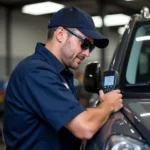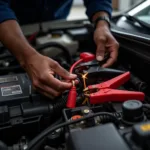Owning a car comes with responsibilities, one of which is regular servicing. But what should a standard car service include? Whether you’re a new car owner or just looking for clarification, understanding what services are typically offered can save you from unnecessary costs and keep your vehicle running smoothly.
Unveiling the Standard Car Service
A standard car service is a preventative maintenance checkup performed at regular intervals, usually every 6 months or 10,000 kilometers (6,000 miles), whichever comes first. It’s designed to identify and address potential issues before they become major problems, ensuring your safety and extending the lifespan of your vehicle.
Key Components of a Standard Car Service
While the specific components can vary depending on your car’s make, model, and age, a standard car service generally includes the following:
1. Oil and Filter Change: This is the cornerstone of any car service. Engine oil lubricates moving parts, reducing friction and preventing wear and tear. The oil filter traps dirt and debris, ensuring clean oil circulates through the engine.
2. Fluid Level Check and Top-Up: Your mechanic will inspect and top up essential fluids like coolant, brake fluid, power steering fluid, transmission fluid, and windshield washer fluid. Maintaining proper fluid levels is crucial for your car’s performance and longevity.
3. Tire Inspection and Pressure Check: Tires are your only point of contact with the road, making their condition paramount for safety. Mechanics inspect tire tread depth, pressure, and overall condition, advising on rotation or replacement if needed.
4. Brake Inspection: Your mechanic will inspect brake pads, rotors, and calipers for wear and damage, ensuring your braking system operates at peak performance for your safety.
5. Battery Check: A battery check involves inspecting the terminals for corrosion and testing the battery’s charge level, ensuring it can reliably start your vehicle.
6. Lights Inspection: All exterior lights, including headlights, taillights, brake lights, and turn signals, are checked to ensure they function correctly, maintaining visibility and signaling for safety.
7. Belts and Hoses Inspection: Belts and hoses are vital components responsible for engine cooling, power steering, and air conditioning. Mechanics inspect them for cracks, wear, and proper tension to prevent unexpected breakdowns.
8. Air Filter Replacement: The air filter prevents dust and debris from entering your engine. A clogged air filter can reduce engine performance and fuel efficiency.
9. Visual Inspection: A thorough visual inspection of the undercarriage, suspension, and exhaust system is conducted to identify any leaks, rust, or damage.
Benefits of Regular Car Servicing
Regular car servicing offers numerous benefits, including:
- Increased Safety: By addressing potential issues early, regular servicing ensures your vehicle operates safely and reliably.
- Improved Performance: Maintaining optimal fluid levels, clean filters, and properly inflated tires contribute to better fuel efficiency, smoother handling, and overall improved performance.
- Extended Lifespan: Regular maintenance can significantly extend the life of your vehicle by preventing small problems from escalating into major repairs.
- Higher Resale Value: A well-maintained car with a documented service history commands a higher resale value.
- Peace of Mind: Knowing your car is in top condition provides invaluable peace of mind when you’re on the road.
Conclusion
Understanding what should a standard car service include empowers you to make informed decisions about your vehicle’s maintenance. Regular servicing is an investment in your safety, your car’s longevity, and your peace of mind. Don’t delay, schedule your next service appointment today.
FAQs
1. How often should I service my car?
Most manufacturers recommend servicing every 6 months or 10,000 kilometers (6,000 miles), whichever comes first. However, refer to your owner’s manual for specific recommendations for your vehicle.
2. What’s the difference between a standard car service and a full car service?
A standard car service focuses on essential checks and maintenance, while a full service is more comprehensive and includes additional inspections and replacements.
3. Can I service my car myself?
While some basic maintenance tasks can be done at home, it’s always best to leave servicing to qualified mechanics who have the expertise and equipment to do a thorough job.
4. How much does a standard car service cost?
The cost varies depending on your car’s make and model, your location, and the specific services included.
5. What if I don’t know when my last service was?
A trusted mechanic can inspect your vehicle and advise on the necessary services based on its condition.
Need assistance? Contact us via WhatsApp: +1(641)206-8880, Email: [email protected]. Our dedicated customer support team is available 24/7 to answer your queries.



